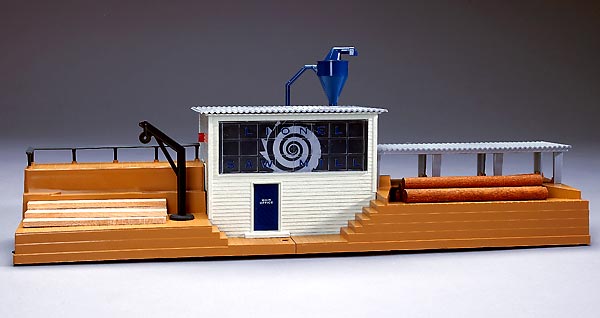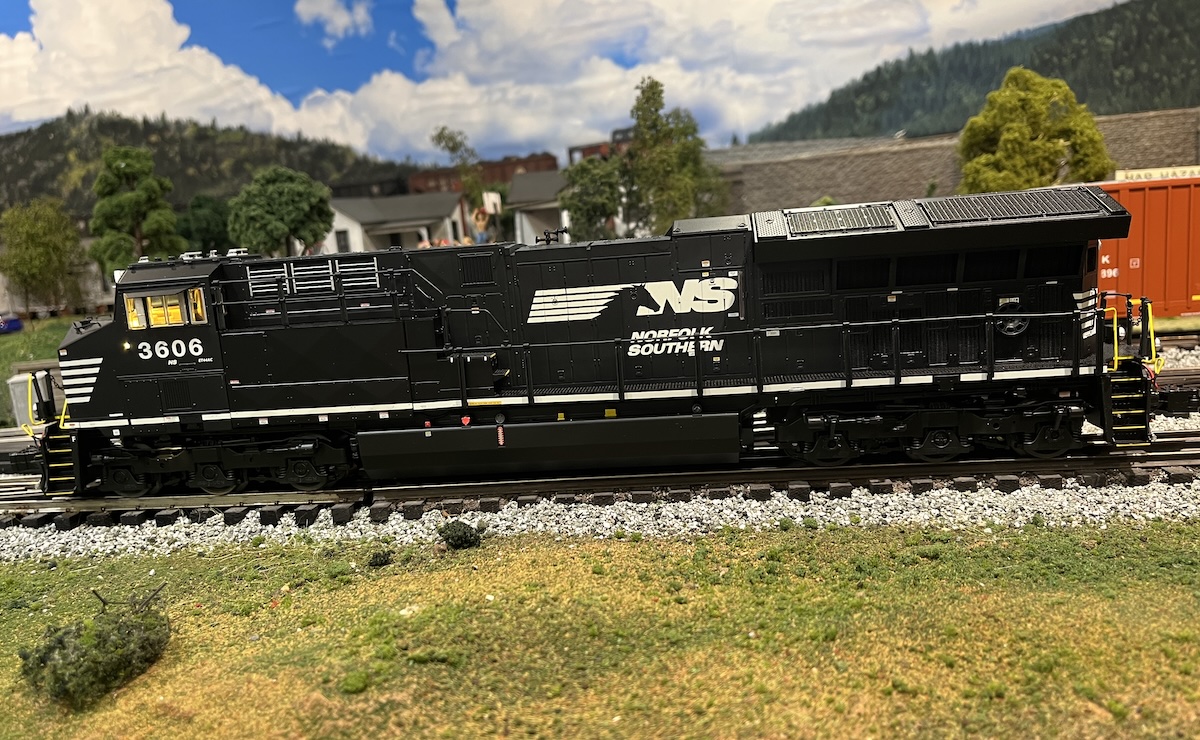On many of the traditional three-rail layouts that I’ve visited, the owner has a no. 164 or 364 loader and something else. Usually it’s a postwar no. 464 sawmill or one of the modern-era reissues.
The good people at Lionel must realize how in demand these cool accessories are because they just introduced another reincarnation of the operating sawmill (now numbered 24147). It has everything operators love about the postwar model, plus a few improvements.
In case you’re not familiar with the classic 464, let me provide a quick history lesson. Lionel brought out its “lumber mill” in 1956. The venerable no. 364 conveyor lumber loader was nearing the end of its decade-long run in the catalog, and Lionel needed something new.
The bright guys in Lionel’s engineering department came up with the 464, and it was a hit with consumers from 1956 through 1960. What operators loved about this accessory then – and still do – is that its action conveys the illusion that rough logs are being cut into smooth planks.
As Alan Stewart explains in the sixth volume of Greenberg’s Guide to Lionel Trains, 1945 to 1969 (2001 edition), the animation of a 464 begins when an operator manually places a few Lionel wood dowels in the sloping tray built into the right side of the lumber mill’s platform. Even better is when an operating log car dumps the logs there.
Next, the motor inside the accessory goes on, and each log travels on a conveyor belt through the central structure. That’s where a rotating saw blade supposedly cuts the log up into the finished boards that emerge on the left side of the mill.
“This is just an illusion,” Alan writes, “as the logs are collected in an interior bin, and the lumber, which must be stacked in a hidden chute, is fed out the left side as the logs disappear into the right side.” He adds that differences in the diameters of the logs and boards weaken the illusion. Maybe so, but it still works on audiences almost 50 years later.
Such a fantastic illusion deserved a second chance, which it received in 1980. General Mills, then producing and marketing the Lionel line, reissued the 464 as the no. 2301 operating sawmill. This version of the accessory was cataloged through 1984; a succeeding model, the no. 12873, came out in 1995 and lasted for two more years.
Now, seven years later, we have another sawmill. The latest version boasts the same measurements as its predecessors (16 inches long, 6 inches wide, and 6 inches high). Like them, it has a sturdy base, plastic structure and fencing, a molded crane on the left side, and a sawdust collector on the roof.
However, the colors of these parts have been changed from previous versions, and I think this is the best-looking lumber mill of them all.
New colors barely scratch the surface of the improvements that distinguish the 24147 from earlier sawmills. In 1956, Lionel had considered putting lamps on the roof, but the need to reduce costs led to a decision to forgo exterior illumination. Now, strobe lights have been installed on the structure that houses the whirling blade to keep laborers safe.
Besides the flashing red lights, designers opted to install a large circular saw blade inside the translucent front of the structure. When the lumber mill is powered, the blade begins to turn and the illusion that wood is being cut grows more convincing.
Finally, Lionel has replaced the vibrating motor (which provided “sawing” sound effects) with a modern can-style motor. The mechanism inside that moves the dowels and boards still uses a reel of movie-style film going over a couple of sprockets to provide reliable action.
Getting the sawmill ready for operation is as easy as it was back in 1956. It took me about 5 minutes to connect the wires between the spring clips on the accessory, the screws on a sliding on/off switch (included with the sawmill), and two terminals on a transformer.
Next, to paraphrase Chuck Berry, I “dropped the boards right into the slot” (in the roof). After putting the five logs packed with my sawmill in the right-hand tray, I pushed the red switch on the controller and let the fun begin!
The lights went on, and the saw blade started whirling. Then the conveyor picked up the first log and carried it on a short journey to the blade.
In a wink of an eye, the finished piece of lumber came out. My young mind was again boggled by what I saw as more logs rolled in and finished boards slid out into a pile.
Giving this reissued accessory so reasonable a price only makes it more irresistible. Even if you haven’t yet found a spot for a log loader on your layout, the no. 24147 sawmill deserves a prominent place where it can entertain onlookers.














